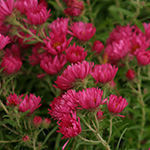
Troublesome Plant – Fall asters
(Symphyotrichum novae-angliae cvs.)
1. ‘Mönch’ Frikart’s Aster
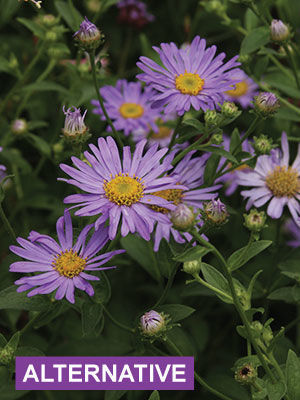
Name: Aster × frikartii ‘Mönch’
USDA hardiness zones: 5 to 8
Size: 2 to 3 feet tall and wide
Conditions: Full sun to partial shade; well-drained soil
I love asters for the color they bring to the autumn garden, but they often grow too tall, need staking and pinching, are prone to mildew, and require frequent division. And for all this care, they bloom for only two to three weeks. There is, however, one aster that blooms almost twice as long—starting in midsummer and continuing until frost. ‘Mönch’ Frikart’s aster has 2-inch-wide, lavender daisy flowers on arching stems, which form a bushy mound that needs no support. The plant slowly expands from a woody base to make a noninvasive pillow of purple that blends well with any color in the garden. An added plus is that I have never seen mildew on this plant.
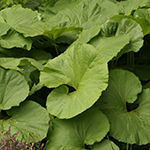
Troublesome Plant – Petasites
(Petasites japonicus)
2. Umbrella Plant

Name: Darmera peltata
Zones: 5 to 9
Size: 3 to 4 feet tall and wide
Conditions: Full sun to partial shade; moist soil
Everyone loves forget-me-not for its beautiful blue flowers, but many gardeners will not allow it in their beds because it is an aggressive seeder and becomes a mildewed mess after flowering. Navelwort, a forget-me-not relative, is a slowly spreading, spring-blooming ground cover, perfect for carpeting under spring bulbs. The cultivar ‘Starry Eyes’ is especially eye-catching because its flowers have deep blue, white-edged stripes radiating from the center, creating a starlike effect. The plant prefers cool, shady conditions but will tolerate some drought.
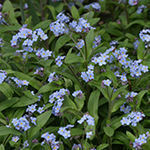
Troublesome Plant – Forget-me-not
(Myosotis sylvatica)
3. ‘Starry Eyes’ Navelwort
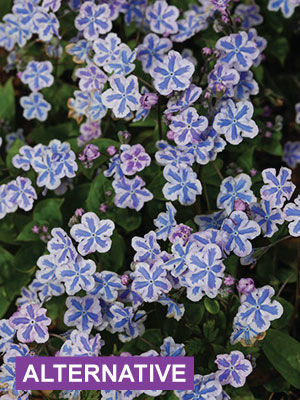
Name: Omphalodes cappadocica ‘Starry Eyes’
Zones: 6 to 8
Size: Up to 10 inches tall and 16 inches wide
Conditions: Partial to full shade; moist soil
Big round leaves are valuable in the garden as a contrast to other leaf shapes, and they make great focal points. Although petasites has monster leaves, it comes with a monster attitude, too, spreading alarmingly in one season. The huge leaves are usually riddled with slug holes, and they droop pathetically in the sun. Umbrella plant, a Northwest native, has rounded leaves that often reach 2 feet across on 3- to 5-foot-tall stems. Slugs seem to ignore it, and it can grow in full sun if it has some moisture. In early spring, two-toned pink flowers in rounded clusters appear on leafless stems, giving it a somewhat alienlike appearance. In autumn, the large leaves turn lovely shades of red.
Sharon Nyenhuis is a landscape designer in Sequim, Washington.
Photos: #1 (troublesome) and #3 (troublesome) Brandi Spade; #1 (alternative), Ann E. Stratton; #2 (troublesome), Steve Aitken; #2 (alternative), Michelle Gervais; #3 (alternative), Joshua McCullough


















Comments
Log in or create an account to post a comment.
Sign up Log in